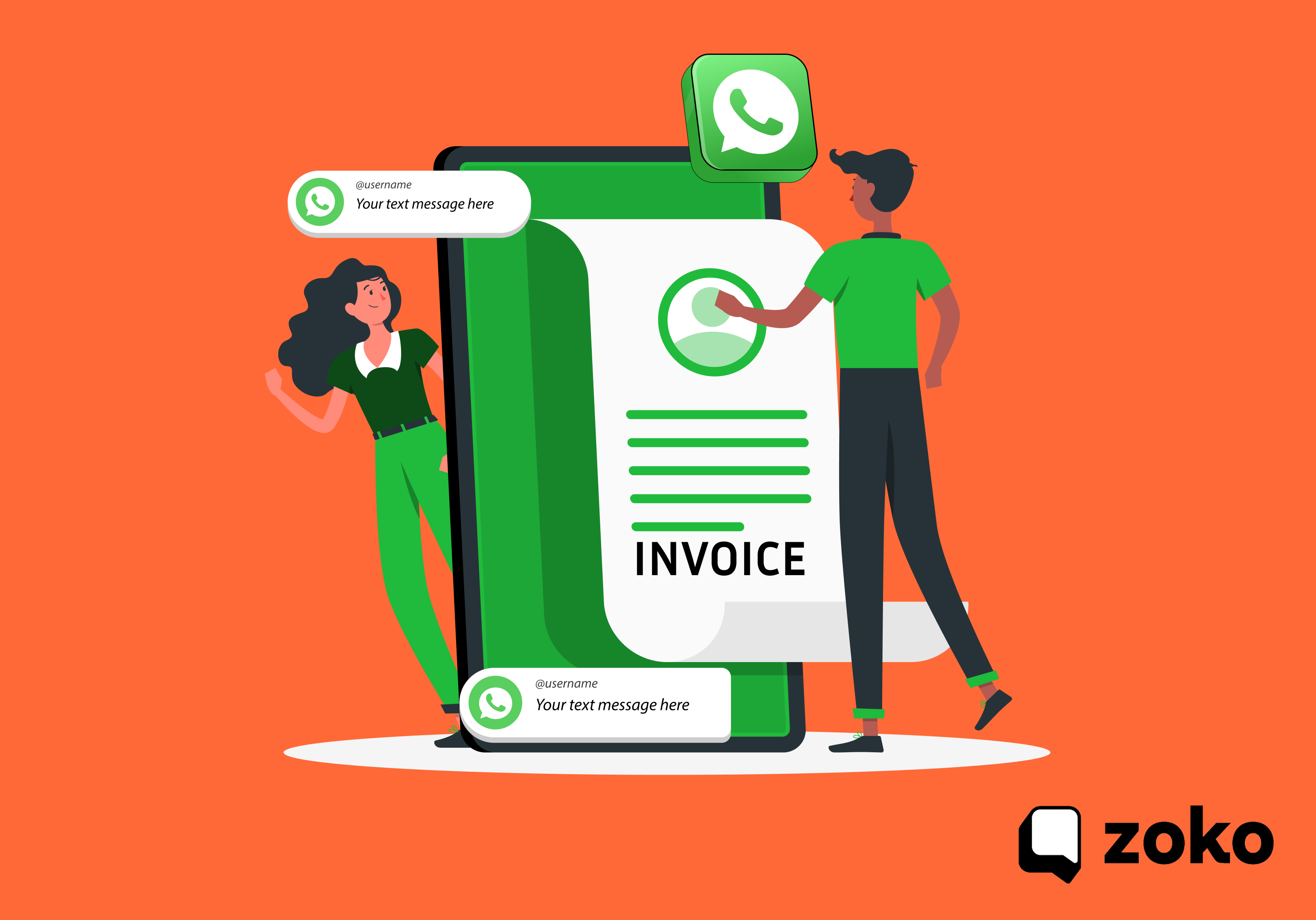
For growing e-commerce stores, scaling order volume often exposes weaknesses in backend systems, especially when customer communication relies on disjointed tools.
For online stores that deal with high order volumes or fast-moving inventories, the last thing they can afford is a delay in post-purchase communication. Manual invoicing consumes operational time and risks errors such as wrong entries, missed dispatches, and overlooked follow-ups.
Automating invoice delivery through WhatsApp addresses these issues by providing instant, accurate, and direct communication via the customer's preferred channel. It enables instant dispatch, real-time visibility, and consistent formatting, all without needing to juggle between platforms or rely on external tools. Instead of treating invoices as a back-office task, businesses can now integrate them seamlessly into their customer flow.
In this article, we’ll break down how businesses can set up automated invoice sending through WhatsApp, from technical configuration to real-world application. You'll also see how this setup enhances speed, accuracy, and customer experience without adding pressure on support or operations teams.
Sending invoices manually, via email, SMS, or shared numbers, often results in delays, misplaced messages, or formats that don’t render well on mobile devices. These small breakdowns can trigger larger consequences: buyers are unsure of payment confirmation, support teams are pulled into basic queries, and there is an overall drop in trust.
Automating invoice delivery on WhatsApp fixes the weakest link in post-purchase communication with consistent, fast, and trackable dispatches.
Here’s how businesses benefit from it:
Now that you have understood the importance of automation, let's set up our system to generate the invoice messages.
Once integrated, the system ties your order processing logic to WhatsApp messaging, enabling invoices to be sent without manual intervention. Here’s how the flow operates behind the scenes:
To automate messaging, you’ll need access to the WhatsApp Business API, not just the standard WhatsApp Business App. This enables automated, template-based messaging tied to specific order actions.
Once a customer places an order on your Shopify store, the system needs a way to relay that transaction data to WhatsApp in real time. This is where integration plays a crucial role.
Platforms like Zoko, a middleware service that connects Shopify with WhatsApp Business API, simplify this process by automatically syncing data and managing message triggers. Instead of building custom connectors or handling webhooks manually, Zoko allows you to:
With Zoko’s direct integration, you don’t need to build anything from scratch; everything works within a single dashboard.
Once the selected event occurs (typically “payment received” or “order confirmed”), the invoice generation system kicks in:
The invoice message uses WhatsApp-approved templates, which include placeholders dynamically filled with order details before instant dispatch, ensuring compliance and personalization.
A typical message structure includes:
“Hi xyz, your order #123456789 has been confirmed.
Invoice: https://abcdefg
Date: 123
Amount: 1234
You can reach out here if you need help.”
Once the message is sent, the customer sees it directly in their WhatsApp chat, where they are most active. This ensures visibility and reduces support dependencies.
Also Read: How to Set Up Wismo ChatGPT Bot
If the customer doesn't open the invoice or respond with a query, the system can automatically react or prompt follow-up flows:
When customers reach out after placing an order, they’re usually looking for quick answers, not a long wait. To achieve this, you should add chatbots. Why? Let's take a look.
While automating invoices covers the transactional side, adding a chatbot to your WhatsApp setup takes care of everything that happens next, queries, updates, requests, and follow-ups. Instead of relying on a support team to handle repetitive questions, a well-configured chatbot can manage most of it instantly.
Suggested Read: How to Set Up the Guru ChatGPT Bot
With a chatbot in place, your WhatsApp will become a fully functional support and engagement channel. Your customers will get the information they need without waiting, and your team gains valuable time to focus on more strategic tasks.
Many invoice automation tools require manual tasks, such as exporting customer data, formatting messages, or verifying that messages were delivered correctly. These manual steps can lead to delays and erode customer trust.
Zoko solves this by eliminating those operational blind spots. It doesn’t just connect your store to WhatsApp, it takes over the whole journey, from trigger to delivery, and handles the details that typically fall through the cracks.
Here’s why it stands out:
Try Zoko free for 7 days and see how seamless WhatsApp invoice automation can be, from real-time order sync to AI-powered customer replies.
A1. Yes. Verified WhatsApp Business API providers process customer data securely, adhering to regulations such as GDPR and CCPA, ensuring data encryption and access control.
A2. The automation setup only applies to customers who opt to receive updates via WhatsApp. You can still maintain traditional invoice delivery methods (email or SMS) for others by utilizing fallback rules in your system.
A3. Yes, but the message must follow WhatsApp’s approved template structure. Most providers allow you to personalize fields such as customer name, order ID, invoice link, and more, within those limits.
A4. The system tracks delivery and read statuses. If a message fails, fallback flows (automated backup process) can be configured to retry delivery or notify your team to follow up manually if needed.



